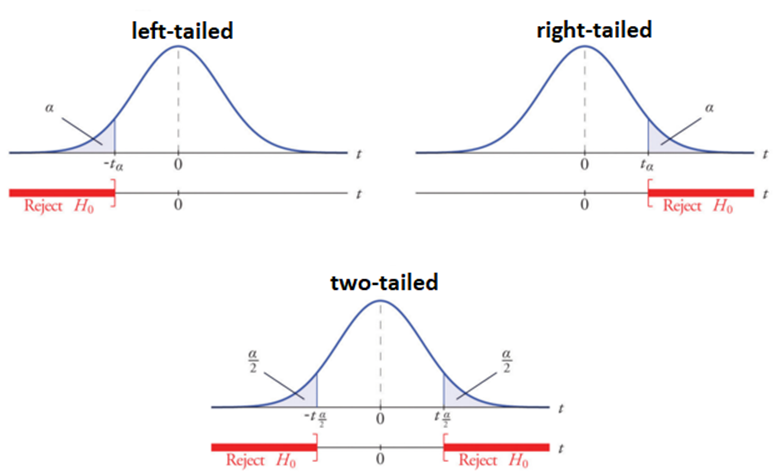HYPOTHESIS TESTING TASK FOR INDIVIDUAL BLOG
For this assignment, the DOE experimental data using the
CATAPULT that my group have conducted during the practical. I will be using
FULL FACTORIAL DATA.
DOE PRACTICAL TEAM MEMBERS :
1. Cheryl (Iron Man) – runs #1 and
#3
2. Hong Yi (Thor)
3. Kieron (Captain America)
4. Ruba (Black Widow)
Data collected for FULL factorial design using
CATAPULT A (fill this according to your DOE practical result):
For
Iron Man, Thor, Hulk. USE THIS TEMPLATE TABLE and fill all the blanks
|
The QUESTION |
To determine the effect of _____ projectile weight ____ on the flying distance of the projectile |
|
Scope of the
test |
The human factor is
assumed to be negligible. Therefore, different users will not have any effect
on the flying distance of the projectile.
Flying distance for the catapult is collected using the factors below: Arm length = __12.5_cm Projectile weight = __0.85___
grams and __2.06____ grams Stop angle = ___49__
degree |
|
Step 1: State the
statistical Hypotheses: |
State the null hypothesis
(H0):
The changes in projectile
weight from 0.85g to 2.06g have no difference on flying distance.
State the alternative
hypothesis (H1): The changes in projectile
weight from 0.85g to 2.06g changes the flying distance. |
|
Step 2: Formulate an
analysis plan. |
Sample size is __n=8__
Therefore t-test will be used.
Since the sign of H1
is __+__, a left/two/right
tailed test is used.
Significance level (α) used in this test is _0.05___
|
|
Step 3: Calculate the
test statistic |
State the mean and
standard deviation of Run # _1_:
Mean = 153.3 Standard deviation =2.85 State the mean and
standard deviation of Run #_3_:
Mean = 113.8 Standard deviation = 4.05 Compute the value of the
test statistic (t): |
|
Step 4: Make a
decision based on result |
Type of test (check one
only) 1. Left-tailed test: [ __ ] Critical value tα = - ______ 2. Right-tailed test: [ __ ] Critical value tα = ______ 3. Two-tailed test: [ _v_ ] Critical value tα/2 = ± ____2.145__ Use the t-distribution
table to determine the critical value of tα or tα/2
Compare the values of test statistics, t,
and critical value(s), tα or ± tα/2 tα/2 = +2.145 or -2.145 t = +21.106 or -21.106 Therefore Ho is ____rejected_______ as it
reaches the rejection region. |
|
Conclusion
that answer the initial question |
Since 21.106
is in the rejection region, H0 (where
projectile weight has no change in distance)
is rejected and H1 (where
projectile weight has significant change in distance) is accepted. This shows that the change in projectile weight
would result in a significant change in flying distance. |
|
Compare your
conclusion with the conclusion from the other team members. |
My groupmates
and I have similar conclusions where changing the projectile weight changes
the flying distance largely. |
|
What
inferences can you make from these comparisons? |
From the runs
compared between my groupmate and I, factor C remains unchanged (-) while the
only factor that changed from high/low were A and B. However, the conclusion
made by both our hypothesis was the same, in which changing the projectile
weight changes the flying distance largely. Hence it can be inferred that
there is little interaction between the A and B factors as changing the high/low
values of them would still result in similar outcomes. |
|
Your learning
reflection on this Hypothesis testing activity |
During this
lesson on hypothesis testing, the biggest challenge I faced was that it took me a while to understand how it works. There are many formulas to find a
specific value that is then used together to determine if the hypothesis is
true or false. However, after doing my research, this hypothesis testing
method has shown me how to prove a hypothesis right/ wrong. It has also
shown me how DOE from the previous practical advances into the next stage. I
strongly believe that I would use this method in future experiments that
require me to work with several data and sample sizes. It can also be
implemented to further improve the tea maker which my group is working on. This
would allow me to efficiently analyse data collected, saving time and energy
while still producing reliable results/ conclusions. |


No comments:
Post a Comment